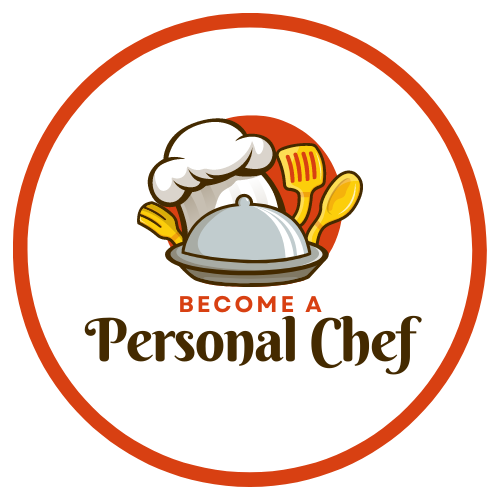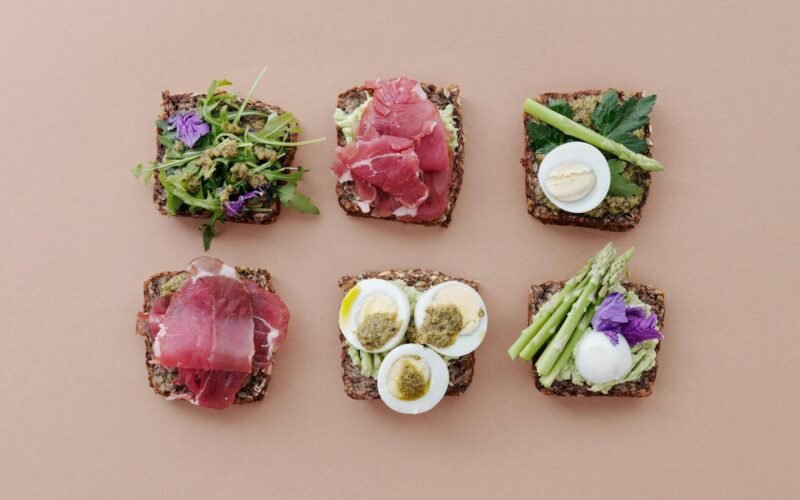Table of Contents
ToggleCalifornia Food for Personal Chefs
As personal chefs, our ability to create unique and flavorful dishes often depends on our knowledge of different cuisines. Today, we are diving into the world of California cuisine, a culinary tradition that emphasizes local and sustainable ingredients.
Let’s uncover the secrets of this cuisine and learn how to bring its distinct flavors to our clients’ tables.
Aspiring personal chefs need to offer something different than traditional chefs who specialize in one or two kinds of cuisines. I’ve written an extensive article with links to many cuisines for your consideration – World Cuisine for Personal Chefs
The Key Ingredients in California Cuisine
California cuisine is renowned for its use of fresh, local ingredients. Some signature foods include avocados, sun-dried tomatoes, artichokes, figs, and goat cheese.
Olive oil is preferred over butter, and herbs like basil and marjoram are commonly used. The cuisine also features a variety of seafood, including Dungeness crab. This focus on fresh, flavorful ingredients is what makes California cuisine stand out.
One of the main factors that set this type of cuisine apart is its emphasis on using organic and sustainable products. With a strong focus on locally sourced ingredients, California cuisine supports small farms and businesses while also promoting healthier eating habits.
By utilizing seasonal produce and avoiding processed foods, chefs are able to create dishes that are not only delicious but also nutritious.
Another defining aspect of California cuisine is its fusion of different cultures and flavors. The state’s diverse population has led to a blending of culinary traditions from around the world. Mexican, Asian, and Mediterranean influences can often be found in dishes, creating a unique and dynamic flavor profile. This fusion allows for endless creativity in the kitchen, resulting in innovative and exciting dishes.
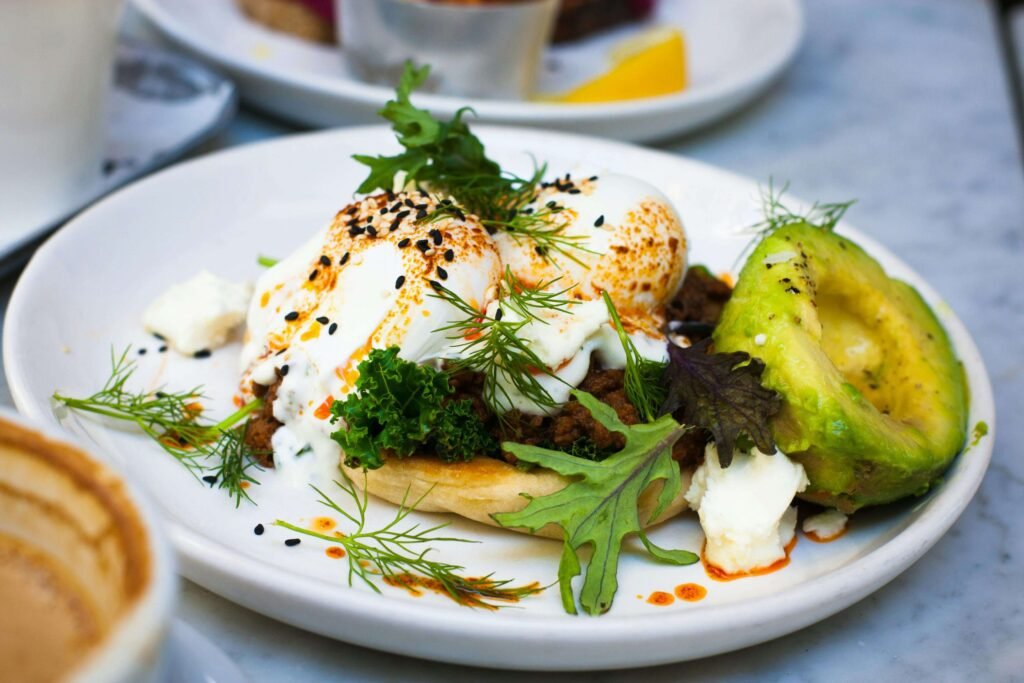
Sourcing Local Ingredients
One of the hallmarks of California cuisine is its focus on local and sustainable ingredients. This means as a chef, you might need to find substitutes for some ingredients if they’re not locally available.
However, many key ingredients such as avocados, tomatoes, and a variety of herbs can be grown or sourced locally in most parts of the world. By using local ingredients, not only are you supporting your community and reducing your carbon footprint, but you’re also ensuring the freshest and most flavorful dishes for your clients.
Traditional Cooking Methods
California cuisine often highlights the natural flavors of its ingredients. The flavors of a dish should come from light sauces, unexpected herbs or chiles, the smoke of a grill, and most importantly, the key ingredients. This is why traditional cooking methods are so important to the organic personal chef.
One of the most notable traditional cooking methods used in California cuisine is grilling. Whether it’s on a charcoal grill or a gas grill, the smoky flavor and char marks add depth and complexity to any dish. Grilling also allows for natural flavors to shine through without being masked by heavy sauces or seasonings.
Another popular technique is roasting, which brings out the natural sweetness of vegetables and meats. Roasting at high heat caramelizes the sugars in food, creating a rich and flavorful crust while keeping the inside tender and juicy. This method can be used for everything from root vegetables to fish.
Braising is another favorite among chefs for its ability to transform tough cuts of meat into tender and flavorful dishes. Slow cooking in a liquid, whether it’s broth, wine, or beer, breaks down the connective tissues in meat and infuses them with the flavors of the braising liquid.
In addition to these traditional techniques, California cuisine also embraces modern methods such as sous vide. This precise method of cooking involves vacuum-sealing food in a plastic bag and submerging it in a temperature-controlled water bath. The result is perfectly cooked food that retains its juiciness and flavor.
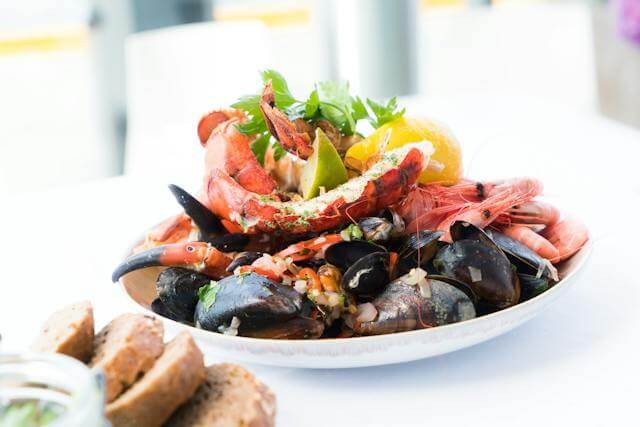
Dominant Flavors and Adjusting Spice Levels
The dominant flavors in California cuisine are fresh, light, and often feature a hint of Mediterranean influence. While some dishes may have a kick from chiles, the cuisine is not generally known for being overly spicy. However, you can always adjust the spice levels to suit your client’s preference.
When it comes to adjusting spice levels, it’s important to understand the difference between heat and flavor. While adding more chiles or hot sauce can increase the heat in a dish, it may not necessarily enhance the overall flavor. Instead, consider using different spices such as cumin, paprika, or garlic powder for added depth of flavor without increasing the spiciness.
Another tip for adjusting spice levels is to incorporate cooling ingredients like yogurt or sour cream into dishes that have a bit too much heat. These dairy products help to balance out the spiciness and provide a creamy texture to dishes.
It’s also important to communicate with your clients about their spice preferences before preparing their meals. Some people may have a low tolerance for spicy foods while others may enjoy a bit of heat. It’s always best to ask and make adjustments accordingly.
When it comes to using fresh chiles in your dishes, it’s important to consider their heat level. Jalapenos, for example, are mild compared to habaneros which can pack a serious punch. Knowing the heat level of different chiles can help you create balanced and flavorful dishes for your clients.
Experimenting with different spices and flavor combinations is key to developing your own unique brand voice as a personal chef. Don’t be afraid to try new things and step out of your comfort zone when it comes to creating delicious meals for your clients.
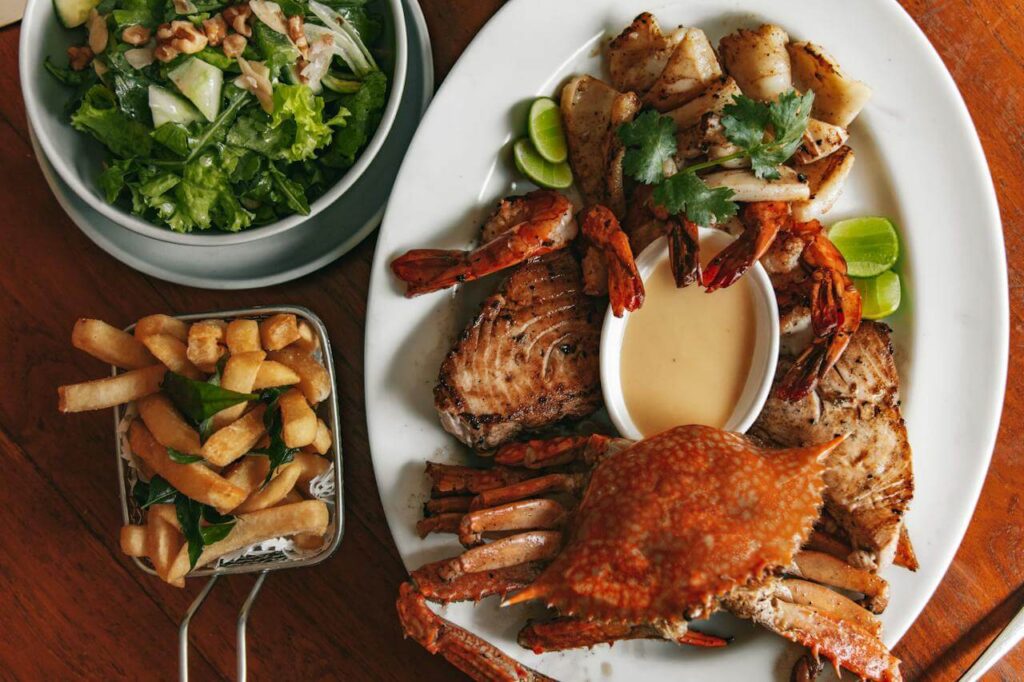
The Cultural Significance of California Cuisine
California cuisine has a rich history, with influences from Asian, Latino, and Mediterranean cultures. Its emphasis on local ingredients not only reflects the state’s agricultural abundance but also its commitment to sustainability. The term “California cuisine” was first coined in the 1970s by chef Alice Waters, who popularized the use of fresh, seasonal ingredients in her acclaimed Berkeley restaurant, Chez Panisse. This new approach to cooking sparked a culinary movement that continues to shape the food culture of California and beyond.
One of the defining characteristics of California cuisine is its reliance on fresh, local produce. With fertile land and a temperate climate, California has an abundance of fruits, vegetables, and herbs available year-round. Chefs like Alice Waters were among the first to recognize the importance of sourcing ingredients from nearby farms and creating menus based on what was in season.
Dietary Considerations and Healthiness
California cuisine is often considered quite healthy due to its emphasis on fresh fruits, vegetables, and lean proteins. However, as with any cuisine, it’s important to consider your client’s dietary restrictions or allergies when preparing these dishes.
Traditional Accompaniments
California cuisine doesn’t just stop at main dishes. Sides such as roasted garlic or a simple salad of locally grown greens are common. Drinks might include California wines or fresh fruit juices, and for dessert, consider a fig tart or a dish featuring local cheeses.
Our roasted garlic, for example, is a classic accompaniment to many California dishes. We carefully select locally grown garlic and roast it to perfection, bringing out its rich and savory flavors. Whether served as a spread on crusty bread or added to sauces and marinades, our roasted garlic adds depth and complexity to any dish.
Another staple in California cuisine is a simple salad made with locally grown greens. At The Organic Personal Chef, we source our lettuces and other greens directly from local farmers, ensuring the freshest and most flavorful ingredients. Our salads are a celebration of the season, with rotating options such as a mixed greens salad with tangy citrus dressing or a roasted beet salad with creamy goat cheese.
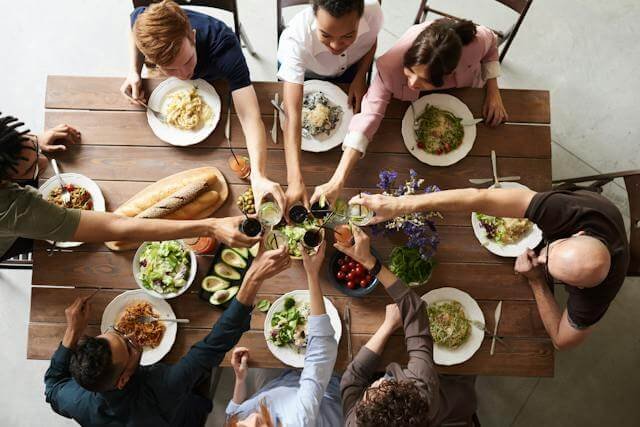
Presentation and Serving
Presentation is key in California cuisine. Dishes are usually served in a way that highlights the freshness and colors of the ingredients. Plates are often garnished with edible flowers, herbs, and other decorative elements to enhance the visual appeal. This attention to detail not only makes the dishes look beautiful, but it also adds an extra layer of flavor.
Serving style is also important in California cuisine. Most dishes are served family-style, encouraging a sense of community and sharing among diners. This reflects the laid-back and communal nature of Californian culture. It also allows for a more relaxed and social dining experience as opposed to a formal, structured one.
Seasonality
Another important aspect of California cuisine is its emphasis on using seasonal produce. Since California has a year-round growing season, chefs have access to fresh fruits and vegetables throughout the year. This means that menus are constantly changing to showcase the best and freshest ingredients available. This also promotes sustainable eating practices as it reduces the need for importing produce from other regions.
In addition to using seasonal produce, California cuisine also incorporates a variety of ethnic and international flavors. The melting pot of cultures in California has led to the fusion of different cuisines, resulting in unique and innovative dishes. From Mexican influences like tacos and burritos to Asian-inspired dishes like sushi and dim sum, California cuisine offers a diverse range of flavors that reflect its multicultural roots.

here’s a list of some essential tools, utensils, pots, and pans often used when preparing California Cuisine:
Chef’s Knife: A versatile tool used for chopping, slicing, and dicing ingredients.
Cutting Board: A sturdy surface where ingredients are cut. It helps protect countertops and makes clean-up easier.
Cast Iron Skillet: This heavy-duty pan is perfect for searing fish, grilling vegetables, or cooking up farm-to-table dishes.
Dutch Oven or Large Pot: Essential for making soups, stews, and one-pot meals using the region’s fresh produce and seafood.
Stockpot: Used for boiling pasta or making larger batches of soup.
Sauté Pan: Essential for sautéing vegetables or creating pan sauces.
Baking Sheet: For roasting vegetables or baking items like flatbreads.
Mixing Bowls: Essential for combining ingredients. Used in almost every recipe.
Wooden Spoon: A must-have for stirring. It’s gentle on your pots and pans and doesn’t conduct heat.
Measuring Cups and Spoons: Necessary for accurate measurements of ingredients.
Tongs: Especially useful when grilling or sautéing.
Peeler: Used for peeling fruits and vegetables.
Whisk: Useful for mixing, beating, and whipping ingredients.
Grater: Used for grating cheese or zesting citrus fruits.
Salad Spinner: California cuisine often features fresh salads, and a salad spinner can help dry washed greens effectively.
Blender or Food Processor: Useful for making smoothies, sauces, or blended soups, which are common in California cuisine.
Juicer: Given the emphasis on fresh fruits and vegetables in California cuisine, a juicer can be handy for making fresh juices or extracting citrus juice for recipes.
Grill or Grill Pan: California cuisine often involves grilling, especially for fish, vegetables, and lean meats.
Remember, the tools you’ll need can vary depending on the specific California dishes you plan to prepare.
Wondering what tools a personal chef might need? I’ve written an extensive article for you – A Comprehensive List Of Must-Have Tools and Essential Items for the Personal Chef
Variations and Preparation
While there are some common themes in California cuisine, there is also a lot of variation. For example, San Francisco is known for dishes like Crab Louie and Chicken Tetrazzini. As a personal chef, you can take inspiration from these regional variations to create your own unique dishes.
In addition to variations in dishes and preparation methods, there is also a diverse range of cultural influences in California cuisine. With its large immigrant population, flavors from all over the world have been incorporated into this style of cooking. So don’t be afraid to experiment with different spices and ingredients to create fusion dishes that reflect the diverse palette of California.
When it comes to preparing California cuisine, freshness and quality of ingredients are key. With access to a wide variety of fresh produce, seafood, and meats, you have the opportunity to create dishes that are both healthy and delicious. Embrace local farmers markets and support small businesses by sourcing your ingredients locally whenever possible. This not only adds a personal touch to your dishes but also contributes to sustainable living practices.
California Food for Personal Chefs
Incorporating your client’s preferences into this cuisine while maintaining its authenticity can be a fun challenge. Whether it’s adjusting spice levels, choosing locally sourced ingredients, or presenting the meal in an appealing way, there’s plenty of room for creativity in California cuisine.
When it comes to creating a menu for your clients, it’s important to keep their preferences at the forefront. After all, they are the ones who will be enjoying the meal. This is why we take a personalized approach to every menu we create at The Organic Personal Chef.
Our goal is to provide you with a unique and delicious dining experience that not only satisfies your taste buds but also aligns with your values and dietary needs. We understand that every client has different tastes, restrictions, and goals when it comes to food. That’s why our team of experienced chefs works closely with each client to craft a menu that fits their individual needs.
Here are some of my favorite tools for providing my personal chef service
As an experienced personal chef, I’ve found that the secret to creating mouthwatering dishes goes beyond just having a passion for food. It’s also about using the right kitchen tools. Today, I’m going to share with you my must-have kitchen items that help me bring my culinary creations to life.
1. Chef’s Knife
The first item on my list is a high-quality chef’s knife. It’s the most versatile tool in my kitchen, perfect for chopping, slicing, and dicing. My preference is for a Global Chef’s Knife, known for the edge and the way they are balanced.
2. Cast Iron Skillet
Next up is a good old cast-iron skillet. From searing steaks to baking cornbread, this pan does it all. I love the Lodge Cast Iron Skillet, which retains heat beautifully and adds a nice crust to anything you cook.
3. Stainless Steel Pots and Pans
A set of stainless steel pots and pans is essential for a variety of cooking techniques. They’re great for simmering, boiling, and sautéing. All-Clad’s Stainless Steel Cookware Set is my go-to choice for its exceptional performance and durability.
4. Immersion Blender
An immersion blender makes pureeing soups, making smoothies, and blending sauces a breeze. I suggest the Braun Multiquick Hand Blender, which is powerful, easy-to-clean, and highly versatile.
5. Digital Thermometer
To ensure perfectly cooked meats every time, a digital thermometer is a must. The ThermoPro TP19 Waterproof Digital Meat Thermometer provides speedy and accurate readings, ensuring your roast chicken or prime rib is cooked to perfection.
6. Silicone Spatula
A silicone spatula is a chef’s best friend for its versatility. It’s heat-resistant, non-stick, and perfect for everything from folding batter to stirring sauces. I recommend the OXO Good Grips Silicone Spatula.
7. Stand Mixer
Lastly, for avid bakers, a stand mixer is a game-changer. The KitchenAid Artisan Series 5-Qt. Stand Mixer isn’t just a pretty face; it makes mixing doughs and batters effortless.
These are the tools that I use daily in my personal chef service. Remember, quality tools make a difference, but they don’t have to break the bank. Start with the basics and add on as you grow more comfortable and adventurous in the kitchen.
Happy cooking!
